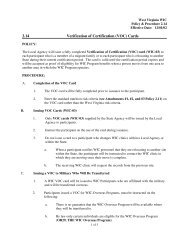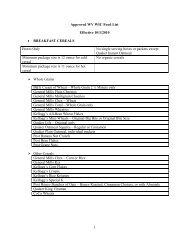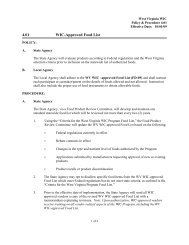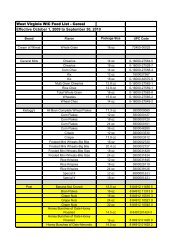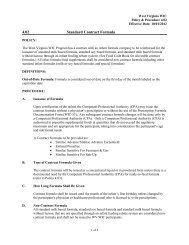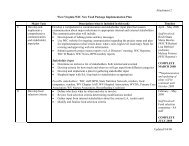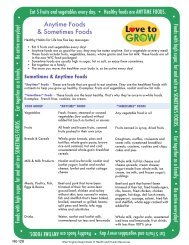SOME Drug / Nutrition Interactions of Interest
SOME Drug / Nutrition Interactions of Interest
SOME Drug / Nutrition Interactions of Interest
Create successful ePaper yourself
Turn your PDF publications into a flip-book with our unique Google optimized e-Paper software.
the physician can introduce supplemental folic acid slowly to avoid breakthrough seizures, and towork up to achieving a normal blood folic acid level. This is important because it is clearly notsafe to simply let the person remain folic acid deficient. Folic acid deficiency is associated withbirth defects, poor DNA production, depression, high homocysteine level, increased risk <strong>of</strong>stroke and impaired immune function.The 1998 introduction <strong>of</strong> fortification <strong>of</strong> grain products with a well-absorbed form <strong>of</strong>folic acid in the US improves the odds <strong>of</strong> preventing some <strong>of</strong> the folic-acid related problems inthe US today. However, requirements continue to be higher than for people not using phenytoin.The usual intake suggested for most healthy people is 400 mcg folic acid /day, with 600 mcgrecommended in pregnancy. “Prenatal vitamins” <strong>of</strong>ten have 800 mcg <strong>of</strong> folic acid, but they<strong>of</strong>ten do not contain many other nutrients. For that reason, just recommending a prenatal vitaminis not a good solution to this problem. A better approach would be to provide as complete aregular multivitamin with minerals daily as possible, and add one or more tiny 400 mcg folicacid tablets.Other food sources include leafy greens and orange juice, but it is not clear that folates inthe form found naturally in foods are as well absorbed as supplemental forms among peopleusing this medication. And, as it is well known that there is significant genetic variation in one’sability to obtain folic acid from non-supplemented food sources, it is reasonable to be generous.Folic acid supplementation is simple, easy and safe at intake levels <strong>of</strong> 1000 mcg/day fromsupplements and fortified foods. That “upper limit” is based on the possibility that higheramounts might “mask” vitamin B12 deficiency, as recognized by elevated blood cell size. Itwas not due to any observed toxicity <strong>of</strong> the vitamin. However, large red blood cell size (MeanCell Volume on a laboratory test) is a very late appearing symptom <strong>of</strong> vitamin B12 deficiencyand it should not be relied upon to detect deficiency. Instead, steps described later should be ableto prevent vitamin B12 deficiency, so the “masking deficiency <strong>of</strong> vitamin B12” concern is nolonger an issue. There is also no evidence that naturally occurring folates in foods pose anythreat to health.In view <strong>of</strong> the well documented effect <strong>of</strong> phenytoin on folic acid status, it is reasonable tomonitor this, e.g. via erythrocyte folate levels, to determine the amount <strong>of</strong> supplementationneeded by an individual already on the drug. Before starting phenytoin, and in the absence <strong>of</strong> theability to monitor the situation with laboratory assessment, it is reasonable to just begin agenerous intake and maintain it … e.g. a regular intake <strong>of</strong> 1000 mcg supplement daily. Thisamount can be provided in a tiny pill by prescription … and that level <strong>of</strong> supplementation isavailable over-the-counter in Europe and elsewhere because <strong>of</strong> the excellent safety pr<strong>of</strong>ile. Onecould also achieve an intake level around that amount (1200) in the USA from, for example,taking a standard multivitamin plus two tiny 400 mcg folic acid tablets without prescription.



